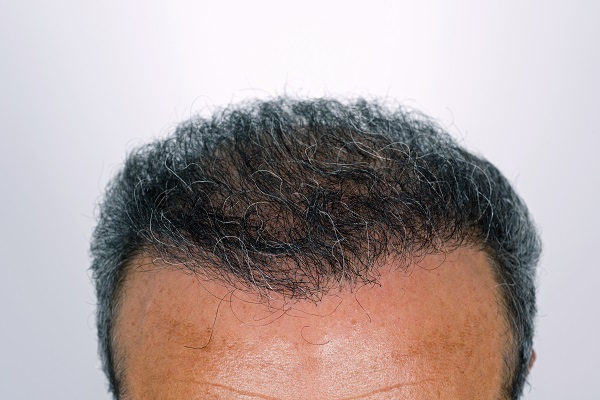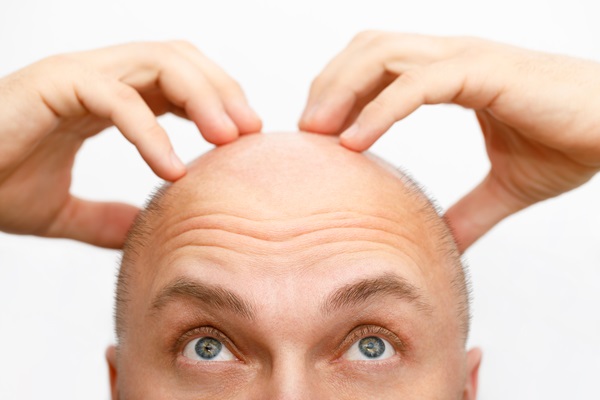4 Hair Replacement Treatment Options

Looking into your hair replacement options? Continue reading to learn about current treatments for hair loss. Genetics, scalp infection, or skin condition are all factors that can contribute to male pattern baldness, otherwise known as androgenetic alopecia. Hair loss may be slowed or even reversed using various treatment methods. Anyone interested in hair replacement treatment should consult with a hair doctor.
4 Treatment options for hair replacement
In certain circumstances, one can stop, or at the minimum, slow down hair loss. However, the underlying factor determines how possible this is. Some of the ways to prevent hair loss include: avoiding hair pulling or twisting, using wide-teeth combs, consuming a balanced diet, avoiding harsh hair care and styling, and changing meds with hair loss as a side effect if possible.
Not all forms of hair loss can be delayed or stopped. In such situations, patients might need to use active treatment to counteract hair loss. The following are some options for dealing with hair loss:
1. Medications
Over-the-counter drugs are available to combat hair loss, including foams and ointments. Minoxidil and finasteride are the most often prescribed medications for hair loss.
Minoxidil: Scientists originally developed minoxidil to treat hypertension. They soon discovered an unintended side effect: increased hair growth. This explains its use as a medication for hair loss. Minoxidil's mechanism of action is still not fully understood by scientists. Due to the drug's effect on hair follicle width, thicker hair strands develop. Minoxidil also prolongs hair growth, which means longer and thicker hair strands. Several studies have shown the safety and efficacy of minoxidil when taken correctly and consistently.
Those who are pregnant or lactating or allergic to any of the substances in minoxidil should not use this medication.
Finasteride: This medication is used to treat male pattern baldness, which affects the crown and center of one's head. There are various contraindications to using this medication. Pregnant or nursing women, as well as children, should avoid using this product. Finasteride was first developed as a treatment for prostate cancer. It functions by lowering levels of the hormone dihydrotestosterone (DHT) in the scalp. Reducing DHT levels may help encourage hair regeneration and prevent hair loss.
While minoxidil affects hair growth on parts other than the head, finasteride does not. Finasteride may be used orally or topically. According to a 2020 study, this drug's topical formulation is less likely to produce serious adverse effects than the oral form. Men with male pattern hair loss who take finasteride may have to wait up to three months before seeing any improvements.
2. Hair transplant surgery
Hair transplant surgery is the only surgical hair replacement treatment. Hair transplantation is effective for male pattern baldness. The process entails removing hair from the area of the head where hair is fuller and transferring them to the scalp where thinning or baldness is occurring.
Hair transplant, like any other surgical procedure, has its risks. According to the American Society of Plastic Surgeons, risks of hair transplant surgery include heavy bleeding and large scars. In addition, the skin plugs might fail, necessitating further surgery to correct.
3. Combined therapies
Hair doctors often prescribe a cocktail of medications, ointments, lotions, and shampoos to treat hair loss. Patients will need to schedule a consultation with a hair doctor. They are highly experienced in hair replacement treatments. They often provide services to determine the best steps to take and personalize treatments based on the individual's needs.
4. Laser combs
Laser combs are a more recent innovation in the fight against hair loss. Proponents believe that by stimulating hair follicles with focused light, these devices increase hair growth. The results of this treatment are not consistent but are often more effective when paired with other treatments.
In 2014, a study published by the National Institute of Health found that low-level laser treatment improved the hair loss of 32 men and women with androgenetic alopecia. When used with minoxidil and finasteride, laser combs can boost hair growth.
In summary
Hair loss may have many causes, including hereditary factors and skin or scalp conditions. Although hair loss prevention is not always possible, using medications like minoxidil and finasteride or over-the-counter items like laser combs may reduce or halt hair loss
If a person is concerned about their hair loss or if the hair loss is abrupt, they should seek the advice of a hair doctor. The medical professional will assess the cause of hair loss and recommend the proper hair replacement treatment option.
Get more information here: http://dillonhair.com or call Dillon Hair Restoration at (847) 241-2132
Check out what others are saying about our services on Yelp: Hair Replacement in Schaumburg, IL.
Recent Posts
Hair loss can usher in mixed emotions and damper your self-esteem, whether or not you were expecting the day. Fortunately, hair plugs or grafts can provide patients with a full head of their natural hair. If thinning or balding is something you are experiencing right now, help is available at our Schaumburg office. First, review…
Hair thinning treatments are far more versatile than they get credit for. Our team works closely with each patient to determine the root cause of their thinning tresses and craft an effective treatment plan. Take a closer look at common causes of hair thinning and the various methods we can use to treat it.Many factors…
Hair loss can significantly impact people, affecting their self-confidence and interpersonal relationships. Fortunately, hair grafting, also known as hair transplantation, provides a viable option to restore the natural hairline. If you are still deciding whether to pursue a hair graft, here are three reasons to consider it.Unlike temporary solutions like wigs or hairpieces, a hair…
For those with wrinkled skin, Botox® injections can provide great relief. While it may be a natural sign of aging, the presence of wrinkles can be frustrating to some. Thanks to the scientific research and testing in the 1990s by several dermatologists, Botox® was approved in 2002 by the Food and Drug Administration for cosmetic…


